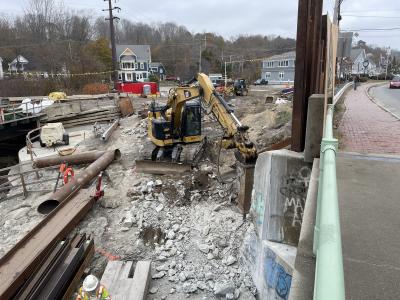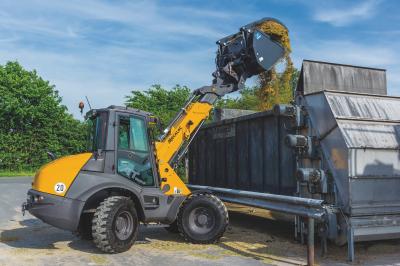SAN BRUNO, Calif. (AP) The tragic explosion of a gas pipeline in a San Francisco suburb has shed light on a problem usually kept underground: Communities have expanded over pipes built decades earlier when no one lived there.
Utilities have been under pressure for years to better inspect and replace aging gas pipes many of them laid years before sprawling communities were erected around them — that now are at risk of leaking or erupting.
But the effort has fallen short. Critics said the regulatory system is ripe for problems because the government largely leaves it up to the companies to do inspections, and utilities are reluctant to spend the money necessary to properly fix and replace decrepit pipelines.
“If this was the FAA and air travel we were talking about, I wouldn’t get on a plane,” said Rick Kessler, a former congressional staffer specializing in pipeline safety issues who now works for the Pipeline Safety Trust, an advocacy group based in Bellingham, Wash.
Investigators are still trying to figure out how the pipeline in San Bruno ruptured and ignited a gigantic fireball that torched one home after another in the neighborhood, killing at least four people. Pacific Gas & Electric Co., the pipeline’s owner, said Sept. 13 it has set aside up to $100 million to help residents recover.
Experts say the California disaster epitomizes the risks that communities face with old gas lines. The pipe was more than 50 years old — right around the life expectancy for steel pipes. It was part of a transmission line that in one section had an “unacceptably high” risk of failure. And it was in a densely populated area.
The blast was the latest warning sign in a series of deadly infrastructure failures in recent years, including a bridge collapse in Minneapolis and a steam pipe explosion that tore open a Manhattan street in 2007. The steam pipe that ruptured was more than 80 years old.
The section of pipeline that ruptured was built in 1956, back when the neighborhood contained only a handful of homes. It is a scenario that National Transportation Safety Board vice chairman Christopher Hart has seen play out throughout the nation, as suburbs have expanded.
“That’s an issue we’re going to have to look on a bigger scale — situations in which pipes of some age were put in before the dense population arrived and now the dense population is right over the pipe,” he said.
Thousands of pipelines nationwide fit the same bill, and they frequently experience mishaps. Federal officials have recorded 2,840 significant gas pipeline accidents since 1990, more than a third causing deaths and significant injuries.
Hart said the tragedy in San Bruno could push other states to begin tougher inspections of their lines.
“It would surprise me if other states didn’t see this and learn from it and be proactive with it,” Hart said.
Congress passed a law in 2002 that required utilities for the first time to inspect pipelines that run through heavily populated areas. In the first five years, more than 3,000 problems were identified — a figure Weimer said underscores the precarious pipeline system.
Even when inspections are done and problems found, Kessler said, there is no requirement for companies to say if or what kind of repairs were made. And Weimer added industry lobbyists have since pushed to relax that provision of the law so inspections could occur once a decade or once every 15 years.
Other critics complain that the pipeline plans are drafted in secret with little opportunity for the public to speak out about the process.
The Pipeline and Hazardous Materials Safety Administration is the federal regulatory arm that enforces rules for the safe operation of the nation’s pipeline system, and has direct authority over interstate pipelines. Most state public utility agencies have adopted the federal rules and carry out inspections and enforcement of pipelines running inside state boundaries.
But the system often relies on the pipeline operators like PG&E to survey their own gas lines and to decide which pipelines are high risk.
The American Gas Association disputes the notion that it cuts any corners and said the industry is subjected to stringent state and federal regulations.
“Safety is unequivocally the No. 1 priority for the natural gas transmission and distribution industry and always will be,” spokesman Chris Hogan said. “The industry spends billions each year to ensure the safety and reliability of the natural gas infrastructure.”
California regulators say current rules are written in a way that relies on industry to report problems and set timetables for repair.
“We’re set up to provide an incentive and a deterrent and to make sure they follow the rules, but we generally avoid telling them how to run their system,” said Julie Halligan, deputy director of consumer protection and safety at the California Public Utilities Commission. “They can’t endlessly defer things and get away with it, because we’ll be looking after the fact to see what they’ve done.”
The challenge of ensuring pipeline safety is compounded by the sheer enormity of the nation’s natural gas network. The federal pipeline agency said the United States has more than 2 million mi. of pipelines — enough to circle the earth about 100 times.
The agency has only about 100 federal inspectors nationwide to ensure compliance, meaning there is no guarantee violators will be caught.
“When you look at two-and-a-half million miles of pipeline with 100 inspectors, it’s not reassuring,” Weimer said. “To a grand degree the industry inspects and polices themselves.”
Potential safety threats have grown as the pipeline network has expanded and age takes its toll on existing infrastructure. More than 60 percent of the nation’s gas transmission lines are 40 years old or older.
Most of them are made of steel, with older varieties prone to corrosion. The more problematic pipes are made of cast-iron. A few places in Pennsylvania still had wooden gas pipes as of last year, according to officials there.
Pipelines in heavily populated locations like San Bruno fall into a category the industry refers to as “high consequence areas.”
Those areas contain about 7 percent of the 300,000 mi. of gas transmission lines in the country, or roughly 21,000 mi. of pipeline. The category has nothing to do with the safety of pipelines, and was created to put the greatest emphasis on the most populous regions.
Industry watchdogs have criticized utilities for not being willing to spend the money necessary to avoid explosions like the one in California. The cost to replace lengthy stretches of pipelines can exceed $30 million.
“They [PG&E] will prioritize and put off work to maintain their level of earnings,” said Bill Marcus, a California attorney whose firm consults nationally with consumer protection agencies and nonprofits on gas rate cases. “To some extent that’s not bad, but it is concerning when those decisions endanger public health or the environment.”
PG&E said it has spent more than $100 million to improve its gas system in recent years, and routinely surveys its 5,724 mi. of transmission and 42,142 mi. of distribution lines for leaks. The utility speeded up surveys of its distribution lines in 2008 and expects to have completed checks in December, it said.
PG&E President Chris Johns said the pipe that ruptured was inspected twice in the past year — once for corrosion and once for leaks — and the checks turned up no problems.
A section of pipe connected to the line that exploded was built in 1948, and flagged as a problem by PG&E in a memo. PG&E submitted paperwork to regulators that said the section was within “the top 100 highest risk line sections” in the utility’s service territory, the document shows.
The fact that it’s in an urbanized area that didn’t exist when the pipe was built is emblematic of a bigger problem nationwide, experts say.
“People have been waiting for a while for this type of disaster to happen because of expanded construction near pipeline right of ways without adequate prevention,” said Paul Blackburn, a public interest lawyer in Vermillion, S.D.
Today's top stories















